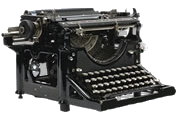Marshal Pétain on Trial
(Commonweal, 1945)
An irate editorial concerning the 1945 trial of French General Henri Philippe Pétain (1856 – 1951).
Whoever is managing the current spectacle in Paris desires us to think that the Petain trial is a revolutionary trial. The thesis is that the whole French nation has risen against the politicians who did not prepare for the war, against the Marshal who signed the the armistice, collaborated with the Germans and betrayed France. And so that trial is not a search for truth, it is a public exposure of truth, it is a simple demonstration…Look at them: Daladier, Reynaud, Weygrand – how they fight each one against the other. Because it is not just Petain who is guilty. It is Petain’s trial. But it is also the trial of all the witnesses… Everyone is guilty.
